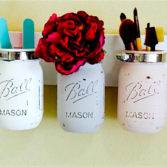Guest Blogger #754, Entry #1766, October 29, 2012
Managing pests in your home can range from difficult to nearly impossible–nobody’s ever found it to be an easy task. Pests want to get into your home for the same reasons that you do. Houses are warm, safe, and full of food. Every critter from the tiniest insect to the squeakiest rodent has its sights set on your cozy bounty of resources. Protecting your home and sealing your borders is a tricky matter, and there are many different products available to handle the task. Educating yourself on the various pest control options will help you find the best strategy for keeping your home pest free.

Is your home clean and clutter free to prevent pests?
Risks associated with pest control chemicals
Chemical pesticides are some of the most readily available and widely used substances for controlling the pest population in homes, but the risks associated with these are a turn-off for many home owners. Chemical pesticides can be absorbed into the bloodstream if they are inhaled or touch skin and this can cause negative side effects for you and your family. Children and pets are especially at risk when pesticides are in the house. They are more likely to touch, inhale, or swallow dangerous chemicals around your home, and their bodies are more vulnerable to the effects of these poisonous substances.
Keep your home clean
The first step to controlling the pest problem in your home is to keep everything clean and free of clutter. Cluttered rooms give insects and other pests a multitude of places to hide, as well as making it more difficult to clear areas of food waste and other things on which they can feed. Be sure to do regular sweeps throughout the house, wash dishes as soon as possible after eating, take out garbage often, and clean up spills immediately. Keeping up these good housekeeping habits will minimize the amount of food around the house to tempt pests. This may not keep your home 100% pest free, but it’s a good way to start.

Choose pest control that will make your family feel safe
Non-Toxic options
Non-toxic pest control options are readily available and can be just as effective as chemical pesticides in controlling pest invasions. Ants are put off by vinegar, so by spraying a solution of white vinegar and water on areas where they enter the house and congregate, you can break up their trails and keep them from coming in. Boric acid is universally offensive to pests, and less toxic to humans than most commercial pesticides. Look for bait boxes and traps that use boric acid to deter pests, or dust boric acid itself on crevices and openings where pests can enter the house.
Look online at sites like www.ActivePestControl.com for more information on safe pest control options for your home. For tough infestations of hardier pests like fleas or bedbugs, harsh chemical foggers and sprays are often the only viable option for extermination. In these cases, be sure to do a single thorough treatment to destroy the pest population, and clean the house from top to bottom. Pay special attention to eating surfaces and upholstery to make sure that you and your family aren’t ingesting the same chemicals you use to kill pests.
For more pest control ideas on Stagetecture, click here.
Receive Stagetecture's Daily Lifestyle Ideas
FREE - Daily emails with recipes, home decor, D.I.Y, and lifestyle tips! : ) Who doesn't need help?






Thanks – some good tips here. Hygiene and housekeeping are definitely very important, but cannot guarantee you’ll remain pest-free. Also, the advice given on over-the-counter pesticides don’t always show how to do the job properly which can result in you exposing yourself to these products, before needing to consult a professional at a later time. As with all things – take care!
Andy
Ronique, thanks for the timely and informative post. The struggle to keep my house scorpion-free after an unfortunate incident this past summer in Arizona keeps me now on my toes. Now I’m adding more lavender bushes to surround the house to keep the scorpion numbers in check – so here is another non-toxic option for you and your readers. Stay healthy! Gosia